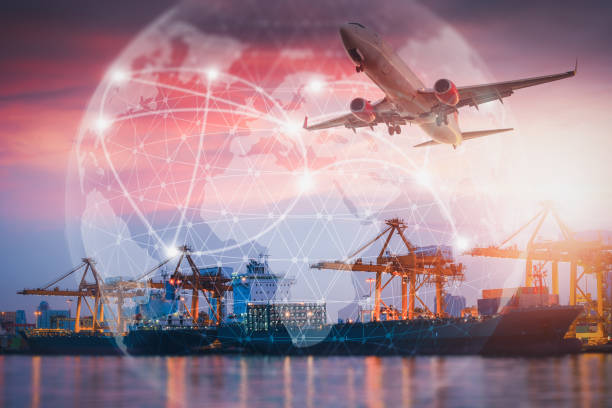The interplay between political and economic instability and international trade is profound. Political upheaval, changes in government policies, and economic downturns can significantly disrupt international trade flows. In environments like Hamriyah Freezone, where stability is often a key attraction for businesses, understanding these impacts is essential. This article delves into how such instability influences international trade, providing historical context, real-world examples, and mitigation strategies. By examining these dynamics, we can better prepare for and respond to these challenges.
Historical сontext
Throughout history, political and economic instability has repeatedly impacted international trade. The Great Depression, for instance, caused substantial disruptions in global trade due to severe economic downturns and retaliatory trade policies. Similarly, during the Cold War era, trade policies were heavily influenced by political alliances and conflicts. These historical incidents provide essential lessons on the correlation between instability and trade disruptions.
Lessons learnt from historical incidents
Historical instances of instability show us the importance of resilient trade policies and diversified trade networks. Trade during the Great Depression highlighted the dangers of protectionism, while the Cold War emphasized the need for political alliances to secure trade routes. Learning from these events can enhance today’s trade strategies, ensuring more stable outcomes even amidst political and economic turmoil.
Political instability and international trade
Frequent government changes can lead to inconsistent trade policies, which are detrimental to international trade. Governments may alter trade agreements, impose tariffs, or enforce quotas based on political agendas. For example, the renegotiation of trade deals often creates uncertainty that hampers trade activities. Moreover, policy reversals can disrupt established supply chains, affecting both local and international businesses.
Conflicts and wars
Conflicts and wars are perhaps the most disruptive forms of political instability affecting international trade. Armed conflicts can obliterate infrastructure, making it challenging to maintain supply chains. Additionally, businesses may face increased risks including property destruction, loss of personnel, and heightened security costs. As a result, countries embroiled in conflicts often see a significant decline in trade activity.
Corruption and governance
Corruption and poor governance create an unstable environment for trade by undermining the rule of law and deterring investment. High levels of corruption can increase transaction costs and reduce economic growth, making a country less attractive for trade. For instance, businesses may face extortion, bribery, and bureaucratic delays, which cumulatively deter international trade engagements.

Economic instability and international trade
Economic downturns such as financial crises drastically affect international trade. Crises can devalue currency, making imports more expensive and exports cheaper. The resulting economic hardship can reduce consumer demand, both domestically and internationally. The 2008 financial crisis, for example, led to a global contraction in trade, affecting virtually every sector.
Inflation and hyperinflation
Inflation and hyperinflation can wreak havoc on purchasing power parity and create price volatility. Countries experiencing hyperinflation often find that their export goods become too expensive for foreign markets, leading to reduced trade volumes. Conversely, a depreciated currency can make imports prohibitively expensive, further destabilizing the economy.
Income disparities and social unrest
Income disparities often lead to social unrest, which can directly impact international trade. Social unrest can result in strikes, protests, and other disruptions that halt production and logistic activities. This makes market access more difficult and unpredictable, affecting businesses and trading partners alike. Social instability can thus serve as both a cause and effect of economic downturns.
Case studies
Brexit serves as a contemporary example of political instability affecting international trade. The uncertainty surrounding the terms of the UK’s exit from the EU led to market volatility and uncertainty. Companies had to re-negotiate trade deals, which disrupted existing supply chains and raised costs. This case illustrates the significant impact that political decisions can have on trade stability.
The 2008 financial crisis
The 2008 financial crisis is a prime example of economic instability’s impact on trade. The crisis led to a severe contraction in global trade as financial markets collapsed and consumer confidence plummeted. The long-term effects included tighter financial regulations and a more cautious approach to economic policy, highlighting the deep-seated impact of economic instability on international trade.
Policy responses and mitigation strategies
Effective policy responses can mitigate the impacts of political and economic instability on trade. Trade agreements, whether bilateral or multilateral, provide a reliable framework that can cushion the effects of instability. These agreements often set clear rules and expectations, which help reduce uncertainties and promote smoother trade flows.
International organizations such as the World Trade Organization (WTO) and the International Monetary Fund (IMF) play a crucial role in stabilizing global trade. The WTO, for example, helps to resolve trade disputes and promote fair trade practices, while the IMF provides financial assistance to countries facing economic crises.
Corporations also have a role in mitigating risks. Companies can adopt strategies such as market diversification and financial hedging to protect against volatility. Diversification helps spread risk across multiple markets, while hedging can safeguard against currency and price fluctuations.
Policy implementation and compliance
Ensuring compliance with international standards and implementing robust domestic policies is crucial. Here’s a look at some key strategies:
- Enhancing Trade Agreements: Strengthening trade agreements can provide stability and predictability, encouraging more consistent trade flows.
- Investing in Infrastructure: Developing robust infrastructure supports better trade logistics and reduces the impact of potential disruptions caused by instability.

Conclusion
Political and economic instability are significant factors that impact international trade. From currency fluctuations to policy changes and conflicts, these instabilities pose challenges as well as opportunities for businesses engaged in international trade. Understanding and anticipating these issues can help businesses and governments to mitigate risks and capitalize on opportunities.
FAQs
How does political instability affect international trade?
Political instability, such as government changes, conflicts, and corruption, can lead to uncertainty in trade policies, disrupt supply chains, and deter investment, impacting international trade negatively.
What are some examples of economic instability affecting trade?
Economic instability examples include financial crises like the 2008 recession, inflation or hyperinflation, and social unrest. These can weaken consumer confidence and disrupt market access.
How can businesses mitigate risks associated with political and economic instability?
Businesses can mitigate risks through several strategies, such as diversifying their markets, engaging in hedging to protect against financial risks, and staying informed about international policies and economic conditions.
What role do international organizations play in stabilizing trade during political and economic instabilities?
International organizations like the WTO and IMF work to provide frameworks that promote stability, regulate international trade, and offer financial assistance to stabilize economies, fostering a more predictable trading environment.
Can international trade agreements help mitigate the effects of instability?
Yes, international trade agreements can provide a stable and predictable environment for trade by setting clear rules and expectations, reducing risks associated with political and economic fluctuations.
